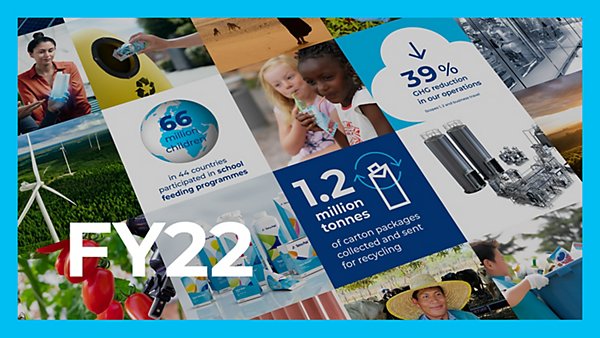The challenge
We all expect food to be safe. And we all deserve food that is free from harmful bacteria. COVID-19 has further sparked the rise in concern about future global food supplies. Conflicts, weather extremes like flooding and droughts, and economic shocks are causing production issues, supply chain complications and other disruptions that leave food systems vulnerable. To ensure that everyone, everywhere has access to safe food, all players across the food value chain need to play their part1.
Being in control of all production parameters to prevent contamination or compromised quality is vital to food safety. And that's why we focus on helping food manufacturers achieve high standards of safety and quality while remaining profitable.
How we can contribute
Since 1952, we have been exploring opportunities in food processing and packaging to help protect food and beverages from physical damage, heat, light, and potentially harmful bacteria.
Aseptic packaging & technology for food safety
As pioneers in aseptic technology and packaging, we have long helped to ensure food safety and quality throughout the entire supply chain. Our aseptic packaging protects food without the need for preservatives or refrigeration, making safe food available to more of the world’s growing population, even in remote areas.
We are also investing in chemical-free food processing technologies like eBeam, to further improve food quality and safety.
Advancing food safety standards
Our expertise in sterilisation technology and microbiology, combined with our hygienic equipment and digitised controls, enable us to contribute to international food safety standards.
We design quality management systems and diagnostics for food production lines across all operations. The components we supply for use in production follow international hygiene standards and guidelines, as well as our customers’ specific requirements.
End-to-End traceability
Our Food Safety Policy allows us full product traceability through the entire food processing and packaging value chain, which we can pass on to food manufacturers to pinpoint inefficiencies so they can do more with less.
With the development of automated solutions such as Tetra Pak® PlantMaster, a factory-wide control system that fully and seamlessly integrates intelligence from every unit of the dairy production line, as well as the development of the Tetra Pak® Connected Package our customers are able to establish consistent quality and food safety.














